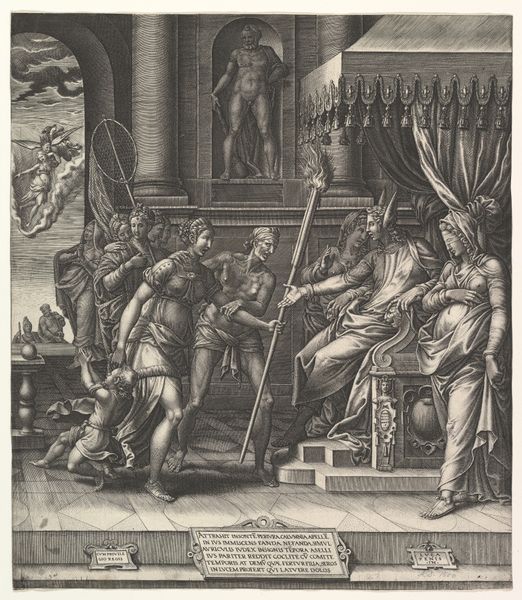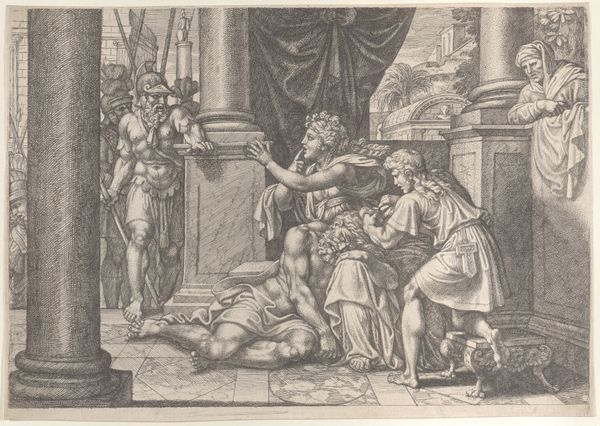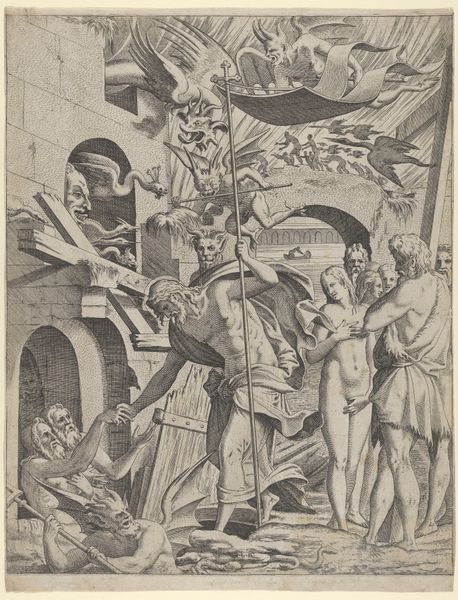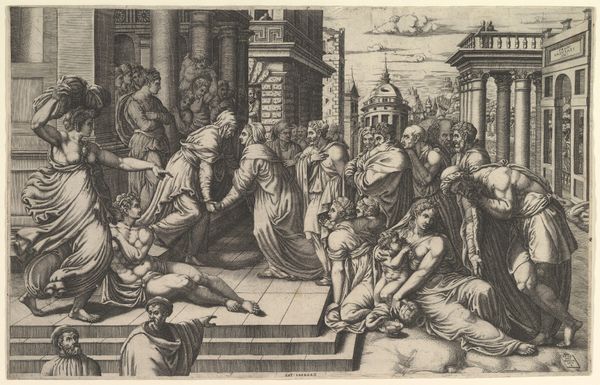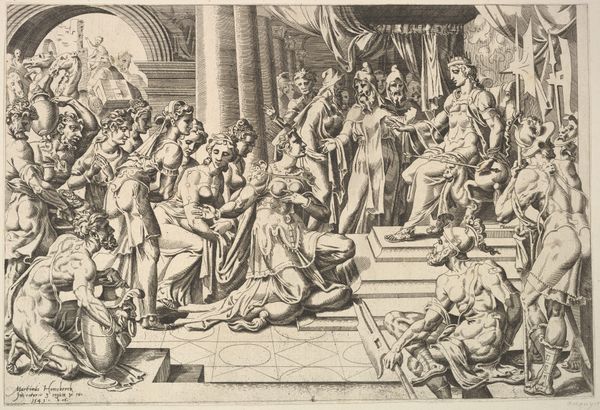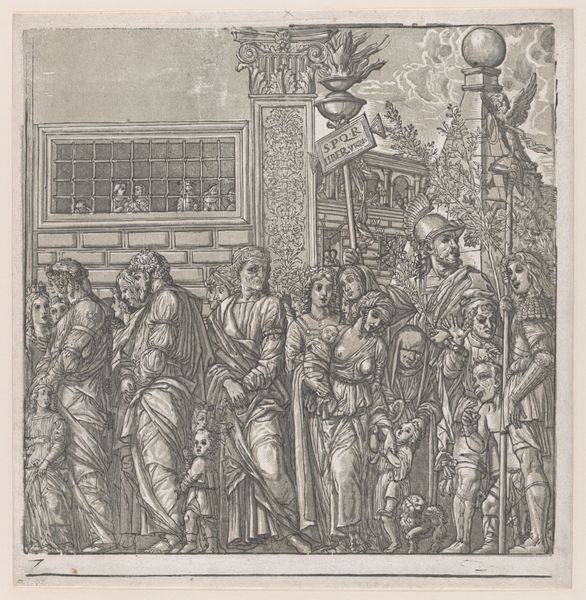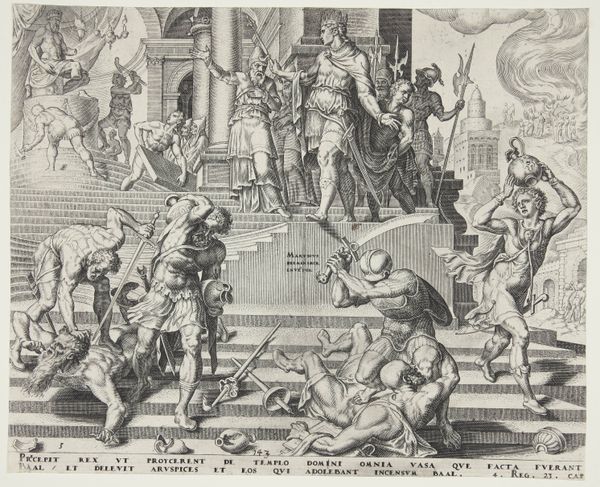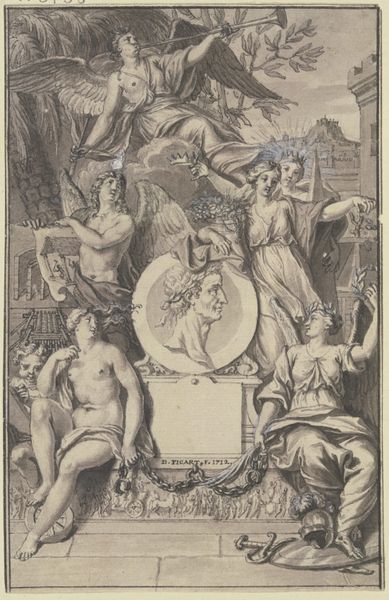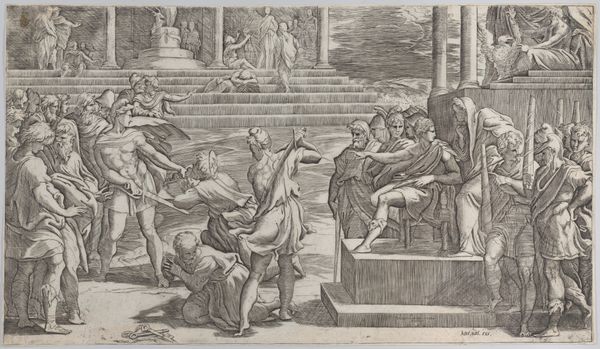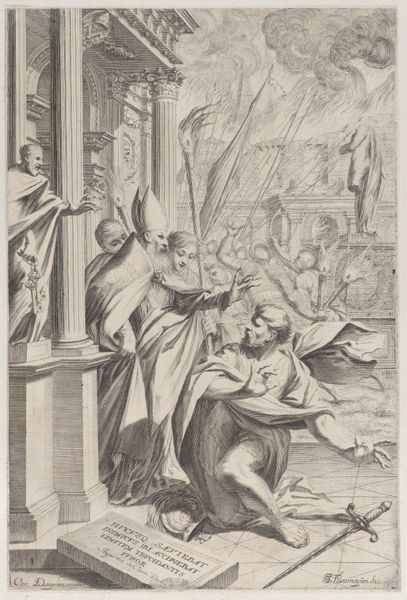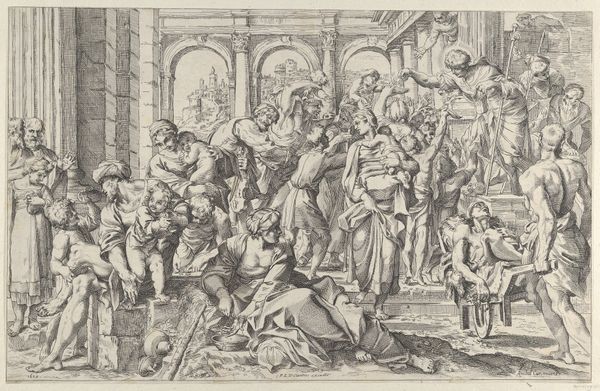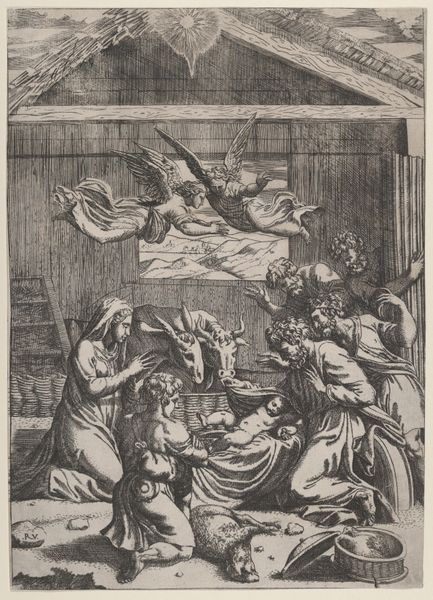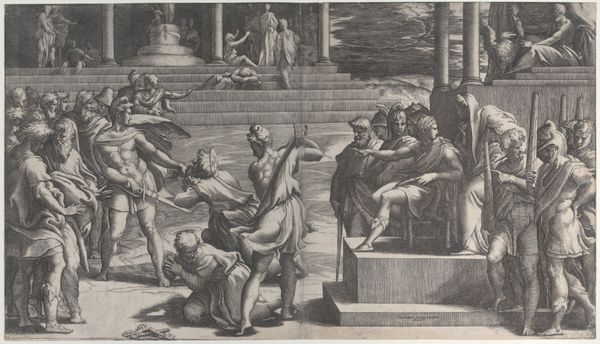
drawing, print, engraving
#
drawing
#
allegory
# print
#
mannerism
#
figuration
#
men
#
history-painting
#
engraving
Dimensions: sheet: 12 15/16 x 12 1/2 in. (32.8 x 31.7 cm) trimmed inside borderline
Copyright: Public Domain
Giorgio Ghisi created this engraving, The Calumny of Apelles, in the 16th century. Here, we see allegorical figures enacting a scene of slander, with the central figure on the throne representing King Midas, his ears tell us he is listening to malicious advice. The Calumny, or slander, approaches the throne, dragging an innocent man. On the left, we see Ignorance and Suspicion instigating the scene; on the right, Repentance and Truth are present too late, showing the difficulty of reversing the spread of lies. The torch is often a symbol of truth and knowledge, but here it is brandished by Treachery, illuminating the path of deceit. This twisting of symbols reveals how easily virtues can be corrupted. Consider Botticelli's interpretation, where a similar scene unfolds with frenetic energy. The motif has its roots in ancient Greek painting. This image taps into a primal fear: the injustice of false accusations. The emotional charge is palpable, stirring deep-seated anxieties about trust and betrayal. The Calumny, as a motif, continues its cyclical journey through art history, each iteration reflecting the anxieties of its time, proving that the power of images lies in their ability to speak to our collective subconscious.
Comments
No comments
Be the first to comment and join the conversation on the ultimate creative platform.
